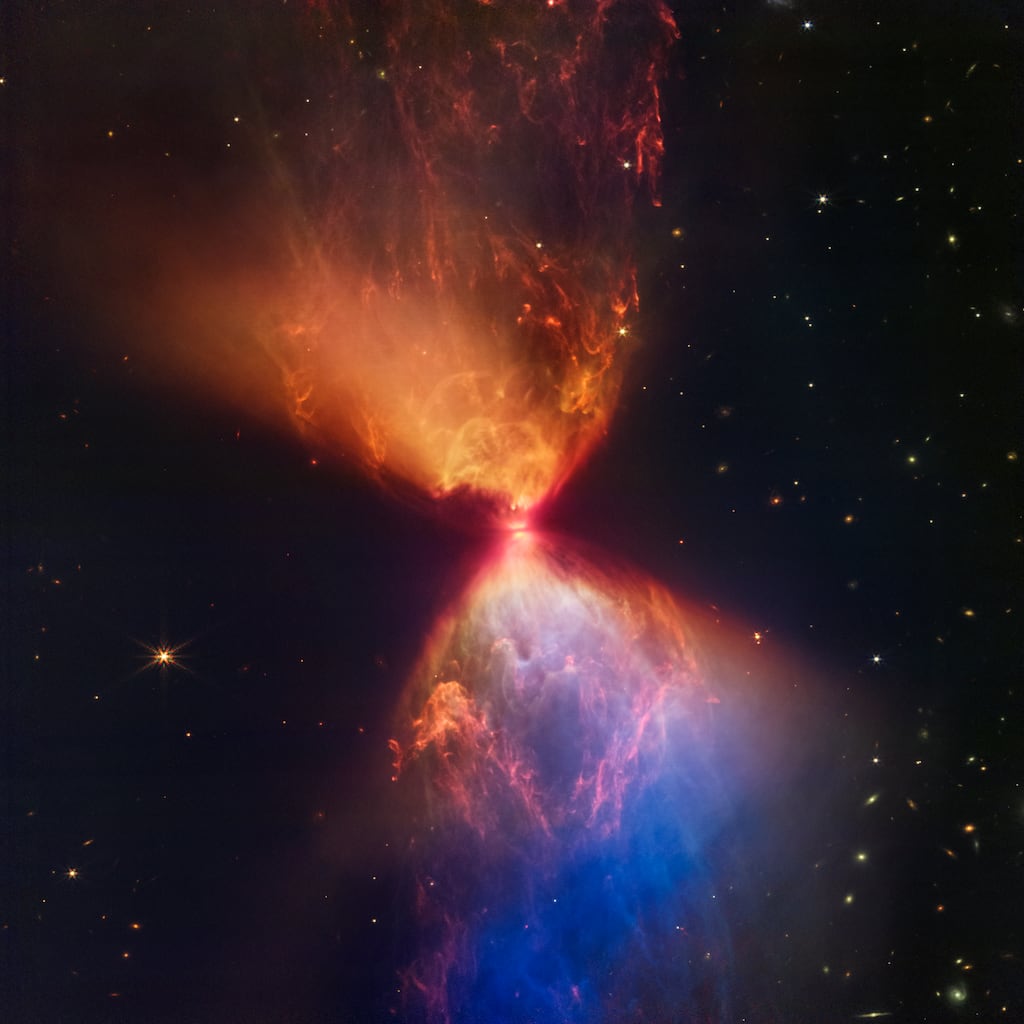For the past six months, the James Webb Space Telescope (JWST) has been delivering stunning new astronomical data that has set the world of physics and astronomy on fire. A joint enterprise between Nasa, the Canadian Space Agency and the European Space Agency (ESA), the satellite telescope was launched in December 2021 and started taking its first pictures in July 2022.
Situated at a location in space 1.5 million kilometres from Earth, the telescope is a miracle of modern technology, bristling with high-resolution and high-sensitivity instruments that allow a deeper view into space than ever before.
In particular, its infrared cameras are designed to allow us to view astronomical objects at immense distance. Since light takes a finite time to reach the observer, this means the telescope can view celestial entities in the distant past of our universe. Indeed, one of the major objectives of the mission was to obtain a glimpse of the very first stars and galaxies that formed.
The new instrument hasn’t disappointed, delivering stunning images of the cosmos of unprecedented clarity. However, as so often in science, some of the first results also proved quite bewildering. Where it had been widely expected that the telescope might glimpse a few smallish and rather dim galaxies in the farthest reaches of the cosmos (representing the first astronomical structures to form), data poured in suggesting a plethora of very large and very bright galaxies at unprecedented distance.
READ MORE
This was quite a surprise. The big-bang model predicts that our universe has been expanding and cooling from a hot, dense and compact state, for about 13.8 billion years, with the first stars and galaxies forming after about one billion years.
The theory predicts that these first protogalaxies should look very different to the larger and brighter galaxies that formed later; yet the data from JWST seemed to suggest that the very farthest (and earliest) galaxies were remarkably similar to their more mature cousins. As one researcher remarked: “It was a bit like visiting my local creche and finding it full of young adults instead of children.”
The puzzling finding received a great deal of attention in the world of physics, with paper after paper appearing on the Physics ArXiv, the online preprint server used by physicists to bring their work to the attention of colleagues without delay. Such publications had not yet undergone the peer review process typical of scientific publications, but they were quickly picked up by science journalists, triggering many articles in popular science magazines claiming that the big-bang model was under threat.
However, such commentary blithely ignored the fact that, like any well-established scientific theory, the big-bang model rests on several distinct pillars of evidence. Thus, any new evidence that appears to invalidate the model has to be examined extremely carefully before drawing any radical conclusions. This is particularly true when one is dealing with a brand new instrument that is exploring new frontiers, and so it proved for the case of the JWST telescope.
Since December last, it has gradually emerged that many of the galaxies observed by the JWST were not quite as distant as first thought; put simply, preliminary estimates of the distance to some of these galaxies were rather inaccurate. This means that several of the “strangely” large and bright galaxies, deemed to be some of the earliest galaxies in the universe, are indeed large and bright, but not nearly as old as first thought, removing the paradox. As so often, the problem concerned the use and calibration of a new instrument, rather than any deep-seated problem with our underlying theories.
That said, even after correction, at least some of the most distant galaxies observed by JWST are indeed larger and brighter than expected, a finding that is casting exciting new light on our understanding of how galaxies form. As always, science progresses like a good detective story, with plenty of false trails, red herrings and corrections before something resembling the truth gradually emerges.
Dr Cormac O’Raifeartaigh lectures in physics at the South East Technological University (Waterford) and is a visiting associate professor of physics at University College Dublin. He blogs at www.antimatter.ie











